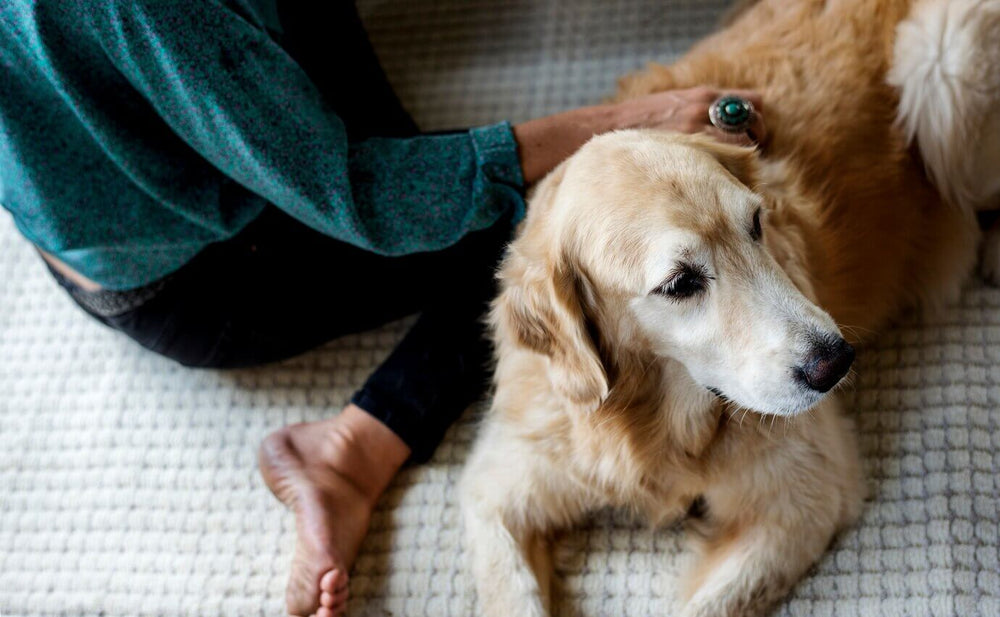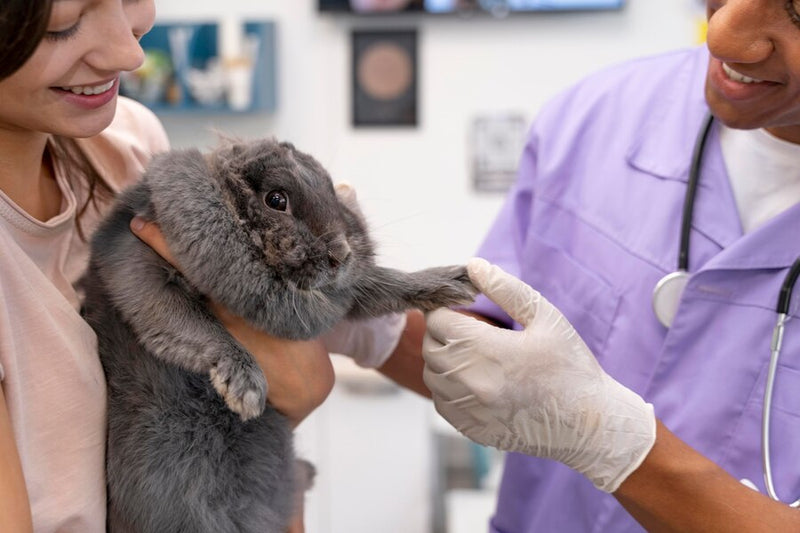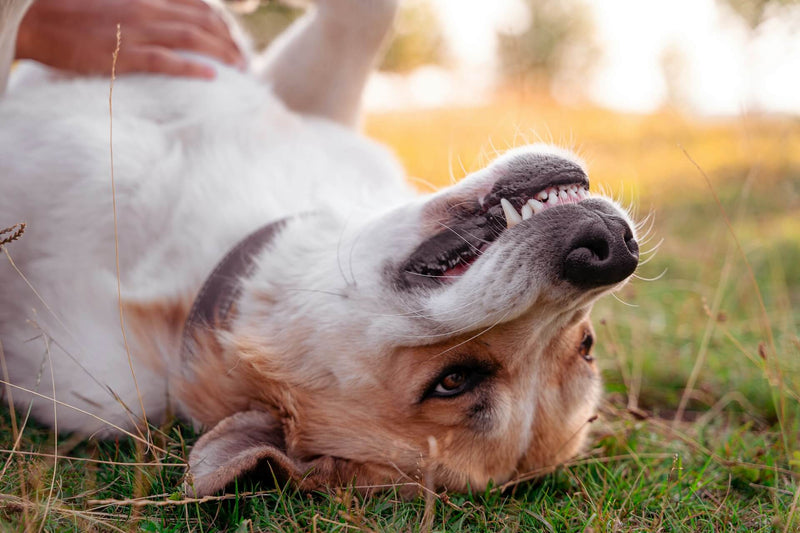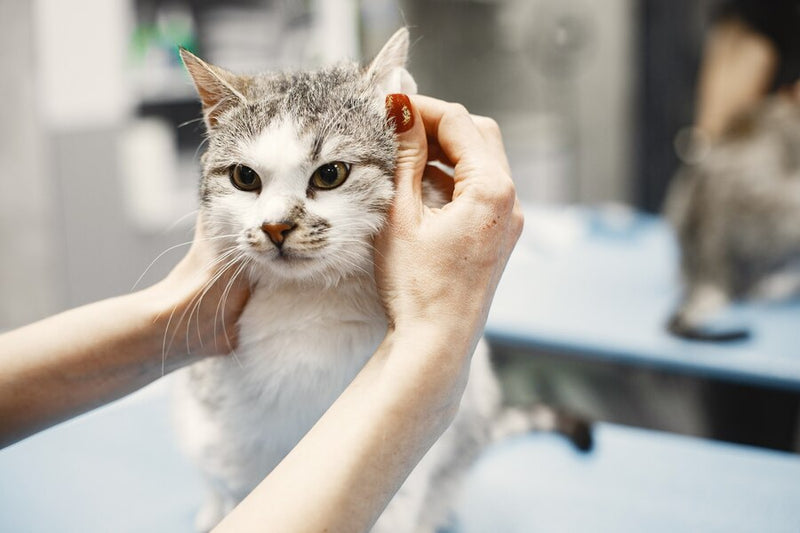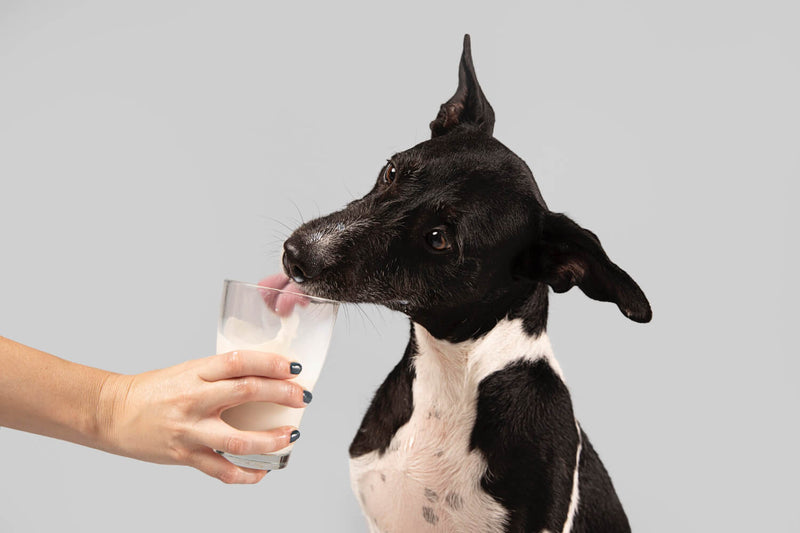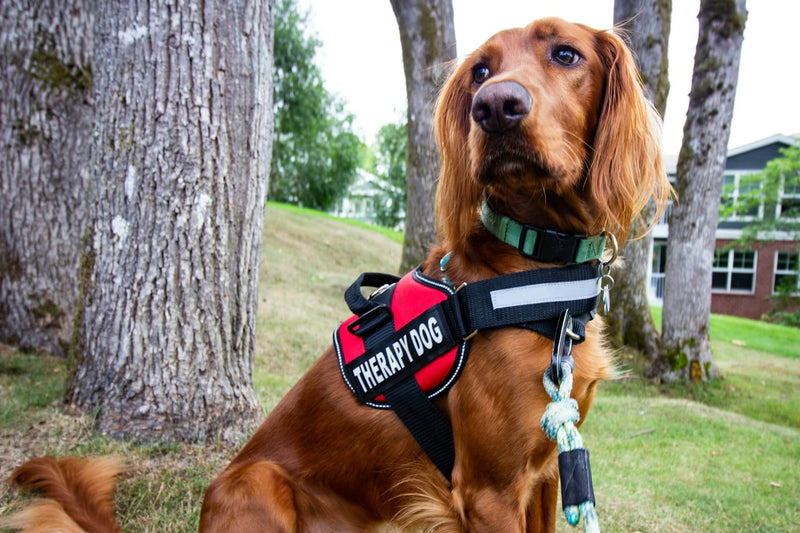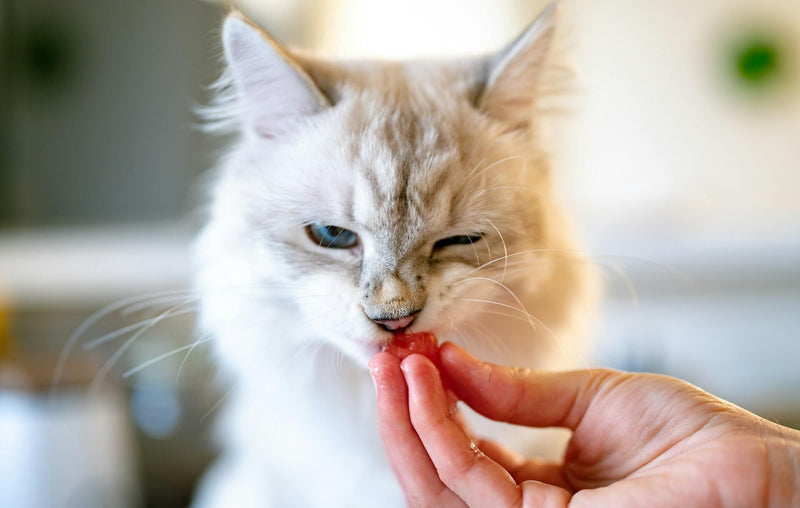
Welcome to Gritty Pet Co.
Your Canadian, specialty Pet Health & Wellness destination. 🇨🇦

Vet Reviewed & Approved
Dr. Ibrar A. is our veterinarian and a key member of our team. ✅
Hot spots in dogs, also known as acute moist dermatitis, are a common and distressing issue for many pet owners. Have you noticed your dog obsessively licking a red, inflamed patch of skin? You’re not alone.
These sudden skin irritations can cause significant discomfort, leading to incessant scratching, balding, sensitivity to touch, and a foul odour. Understanding the causes, recognizing symptoms early, and knowing how to treat and prevent hot spots are crucial for keeping your dog happy and healthy. In this guide, we’ll walk you through everything you need to know about hot spots, offering practical advice and empathetic support to help you and your pup navigate this challenging condition.
Key Takeaways
Hot spots in dogs can be stressful for both pets and owners. Here are the most crucial points to remember to keep your furry friend comfortable and healthy.
Identify Early Symptoms: Look for red, moist patches on your dog’s skin, accompanied by hair loss and a foul odor (1). Early detection can prevent the condition from worsening.
Effective Treatment Options: Initial home treatment includes cleaning the area, trimming hair, and applying vet-recommended topicals (2). If there's no improvement in a couple of days, seek veterinary care for further intervention.
Preventive Measures: Ensure a balanced diet rich in omega-3 fatty acids, maintain regular grooming, and address underlying issues like allergies or flea infestations (3). Breeds like Golden Retrievers, German Shepherds, or any double coated breed require extra attention to prevent hot spots, and it is important that moisture is not trapped against the skin.
- Advanced Preventive Strategies: Implement stress reduction techniques such as regular exercise and mental stimulation (4). Address seasonal care by adjusting grooming routines and using protective clothing during high-risk periods to prevent hot spots from developing in the first place.
Table of content

Identifying Hot Spots in Dogs
Hot spots, also known as acute moist dermatitis, are painful and inflamed areas of the skin that can develop rapidly in dogs (5). Recognizing the signs and symptoms of hot spots is crucial for prompt treatment. Common indicators of hot spots include:
Red, Moist Skin: Hot spots typically appear as red, moist patches on the skin, often accompanied by hair loss and a foul odor.
Constant Licking or Chewing: Dogs may excessively lick, chew, or scratch at the affected area, exacerbating inflammation and causing further skin damage.
Warmth and Swelling: The skin around the hot spot may feel warm to the touch and appear swollen or irritated.
Pain or Discomfort: Dogs with hot spots may exhibit signs of discomfort, such as whimpering, reluctance to be touched, or changes in behaviour.
If you notice any of these symptoms on your dog's skin, it's essential to act quickly to prevent the hot spot from worsening. Seeking veterinary advice is recommended to determine the underlying cause and appropriate treatment plan.
Home Treatment vs. Veterinary Care: What You Need to Know
When it comes to treating hot spots in dogs, there are options for both home care and veterinary intervention. Here's what you need to know about each approach:
Home Treatment
Gently clean the hot spot with a mild antiseptic solution and pat it dry with a clean towel. Carefully trim the hair around the hot spot to prevent further moisture and bacteria buildup. Apply a veterinarian-recommended topical medication or soothing spray to help relieve itching and promote healing. Prevent your dog from licking or scratching the hot spot by using an Elizabethan collar or covering the area with a bandage or protective sleeve. Bitter apple spray or another similar lick deterrent may be used on the areas around the wound, but should not ever be sprayed on the raw area.
Veterinary Care
If home treatment does not improve the hot spot within a day or two, or if the hot spot is severe or spreading rapidly, seek veterinary care promptly. Your veterinarian may prescribe oral antibiotics or anti-inflammatory medications to control infection and reduce inflammation. They may also work to identify and address any underlying factors contributing to the development of hot spots, such as allergies or skin infections.
Whether you opt for home treatment or veterinary care, it's essential to monitor your dog's hot spot closely and seek professional help if it fails to improve or worsens.
Diet's Influence on Hot Spot Development
While diet alone may not directly cause hot spots in dogs, it can play a significant role in skin health and susceptibility to skin issues. Certain dietary factors, such as food allergies or intolerances, can contribute to skin inflammation and itching, increasing the likelihood of hot spot development (6). Additionally, inadequate nutrition can compromise the skin's barrier function, making it more susceptible to infection and irritation.
To support your dog's skin health and reduce the risk of hot spots, consider the following dietary strategies:
High-Quality Nutrition: Provide your dog with a balanced and nutritionally complete diet formulated to meet their specific life stage and health needs.
Omega-3 Fatty Acids: Incorporate omega-3 fatty acids into your dog's diet, either through fish oil supplements or foods rich in these essential nutrients. Omega-3s have anti-inflammatory properties and can help alleviate skin inflammation and itching.
Limited Ingredient Diets: If your dog has food sensitivities or allergies, consider switching to a limited ingredient diet formulated with novel protein and carbohydrate sources to reduce the risk of triggering allergic reactions.
Hydration: Ensure your dog stays hydrated by providing access to fresh, clean water at all times. Proper hydration is essential for maintaining healthy skin and promoting overall well-being.
By paying attention to your dog's diet and providing them with the nutrients they need for optimal skin health, you can help reduce the likelihood of hot spots and other skin issues. If you suspect dietary factors may be contributing to your dog's hot spots, consult with your veterinarian for personalized dietary recommendations.
Understanding Underlying Causes of Hot Spots
Hot spots can be a frustrating issue for both dogs and their owners. Identifying and addressing the root cause is crucial for effective treatment and prevention of hot spots. Here are some common underlying causes of hot spots in dogs:
Allergies (food allergies, environmental allergies)
Flea infestations or other parasite bites
Bacterial or yeast infections
Excessive moisture or humidity trapped in the coat
Scratching or licking due to boredom, anxiety, or discomfort
Skin irritants or allergens in the environment
Trauma or injury to the skin
Poor grooming habits or over-bathing
Underlying medical conditions such as hypothyroidism or Cushing's disease
Breed-specific predispositions or coat types
Stress or changes in routine
Understanding Environmental Triggers
Environmental factors such as pollen, mold, and dust mites can exacerbate hot spots in dogs, leading to increased discomfort and itching (7). These allergens are often present in both indoor and outdoor environments and can be particularly problematic during certain seasons. Here's how you can help minimize your dog's exposure to these common allergens:
Pollen: Keep your grass cut short and avoid outdoor activities during high pollen times, usually dawn and dusk. After outdoor play, wipe your dog down with a damp cloth to remove pollen from their fur.
Mold: Reduce your dog's exposure to mold by keeping them out of damp areas like basements and using a dehumidifier to control humidity levels. Regularly clean and disinfect areas prone to mold growth, such as humidifiers and bathrooms.
Dust Mites: Limit your dog's access to carpeted areas and use dust mite covers on their bedding. Wash their bedding in hot water weekly and consider using an air purifier to reduce dust mites in the home.
Behavioral Insights
Stress and anxiety can significantly contribute to the development and exacerbation of hot spots in dogs. When dogs are anxious or stressed, they may lick or chew their skin excessively, leading to hot spots. Understanding and addressing the psychological aspects of your dog's health is essential for effective management:
Regular Exercise: Ensure your dog gets plenty of physical activity to help reduce anxiety and stress. Regular walks, playtime, and mental stimulation through interactive toys can make a big difference.
Calming Products: Consider using products designed to reduce anxiety in dogs, such as calming sprays, CBD oil, or anxiety wraps like Thundershirts. These can help soothe your dog's nerves and reduce compulsive licking or chewing.
Comfortable Environment: Create a safe and comforting environment for your dog. Provide a quiet space where they can retreat when feeling overwhelmed, and maintain a consistent routine to help them feel secure.
Seasonal Care Tips for Managing Hot Spots
Certain seasons, particularly warmer months, can increase the likelihood of hot spots in dogs due to factors like allergies, increased outdoor activity, and higher humidity levels. Here are some seasonal care tips to help manage hot spots in dogs:
Regular grooming: Brushing your dog's coat regularly helps remove loose fur, dirt, and debris that can contribute to hot spots, especially during shedding seasons.
Keep your dog cool and dry: During hot and humid weather, ensure your dog has access to shade and plenty of fresh water to prevent overheating. Avoid spraying or soaking your dog when the environment is humid, as it is much harder for the undercoat to properly dry.
Check for parasites: Fleas, ticks, and other parasites are more active during certain seasons. Regularly check your dog for signs of infestation and use appropriate preventatives as recommended by your veterinarian.
Avoid allergens: Certain seasons can exacerbate allergies in dogs, leading to itching and scratching that may result in hot spots. Minimize your dog's exposure to common allergens such as pollen, mold, and dust mites.
Monitor outdoor activities: During seasons when outdoor activities are more frequent, such as spring and summer, be mindful of potential skin irritants your dog may encounter, such as plants, chemicals, or rough terrain.
Adjust grooming frequency: Depending on the season, you may need to adjust your dog's grooming routine. For example, during wet seasons, more frequent baths may be necessary to remove mud and prevent bacterial growth (dry well!), while during dry seasons, bathing too often can strip the skin of its natural oils, leading to dryness and irritation.
Consider protective clothing: If your dog is prone to hot spots or has sensitive skin, consider using protective clothing or gear during outdoor activities to minimize exposure to irritants and potential trauma to the skin.
Breed Prone to Hot Spots
Some dog breeds are more predisposed to developing hot spots due to their unique coat types, skin sensitivities, or genetic predispositions. Understanding these breed-specific factors (8) can help you take proactive measures to keep your dog healthy and comfortable.
Breeds with Long or Thick Coats: Dogs like Newfoundlands, German Shepherds, and Golden Retrievers often have dense undercoats that can trap moisture and create an ideal environment for bacterial growth. Regular grooming, including thorough brushing and occasional trimming, helps prevent matting and moisture buildup.
Breeds with Droopy Ears: Breeds such as Cocker Spaniels and Basset Hounds are prone to ear infections due to their droopy ears, which can trap moisture and debris. Keeping the ears clean and dry and monitoring for signs of infection can help reduce the risk of hot spots around the ear area.
Breeds with Sensitive Skin: Breeds like Bulldogs and Boxers are known for having sensitive skin that can react to environmental allergens, leading to hot spots. Using hypoallergenic shampoos and maintaining a clean living environment can help manage their skin sensitivities.

FAQ
1. What Causes Hot Spots In Dogs?
Hot spots, or acute moist dermatitis, can be triggered by various factors, including allergies, flea bites, poor grooming, and underlying skin infections. For instance, a dog constantly scratching due to flea bites can develop these painful skin irritations.
2. How Can I Tell If My Dog Has A Hot Spot?
Look for red, moist patches on the skin, often accompanied by hair loss and a foul odor. Your dog may also excessively lick or chew the area. For example, if your dog is persistently licking a specific spot, it's worth checking for a hot spot.
3. Can I Treat My Dog's Hot Spot At Home?
Yes, initial home treatment includes cleaning the area with mild antiseptic, trimming surrounding hair, and applying a soothing, vet-recommended topical. If there’s no improvement in a couple of days or the condition worsens, consult your vet for further treatment.
4. How Can Diet Impact My Dog's Hot Spots?
A balanced diet supports overall skin health. Foods rich in omega-3 fatty acids, for example, help reduce inflammation and promote healthy skin. If your dog has food allergies, switching to a limited ingredient diet can also be beneficial.
5. Are Certain Dog Breeds More Prone To Hot Spots?
Yes, breeds with long or dense coats, such as Golden Retrievers and German Shepherds, are more susceptible. Regular grooming and skin checks can help manage and prevent hot spots in these breeds, keeping their skin healthy and irritation-free.
Top YouTube Videos on Hot Spots in Dogs
1. Hot Spots In Dogs: Natural Home Remedies
Why Watch: This video provides valuable insights into natural home remedies for treating hot spots in dogs. It covers various DIY treatments that are easy to prepare and effective in soothing your pet's skin.
2. How to Treat Hot Spots With Vetericyn Plus
Why Watch: This video features veterinarian Dr. Mindy explaining how to use Vetericyn Plus to treat hot spots. It's a great resource for pet owners looking for professional advice on using a reliable product to heal their dog's skin issues.
Final Thoughts
Hot spots in dogs may be common, but they don't have to be a constant source of concern for pet owners. By understanding the underlying causes, implementing preventive measures, and seeking timely veterinary care when needed, you can effectively manage and minimize the occurrences of hot spots in your canine companion. They'll thank you for it!
References
- 1. Rossi, J. (2012). What's Wrong With My Dog or Puppy?. 5th Corner Publishing.
- 2. Easterly, S. (2010). Your Older Cat: A Complete Guide to Nutrition, Natural Health Remedies, and Veterinary Care. Simon and Schuster.
- 3. Messonier, S. (2003). 8 weeks to a healthy dog. Rodale.
- 4. Wallis, L. J., Range, F., Kubinyi, E., Chapagain, D., Serra, J., & Huber, L. (2017, November). Utilising dog-computer interactions to provide mental stimulation in dogs especially during ageing. In Proceedings of the Fourth International Conference on Animal-Computer Interaction (pp. 1-12).
- 5. De Bellis, F., & Di Mattia, D. (2022). Approach to emergency dermatology cases in dogs and cats. In Practice, 44(8), 436-451.
- 6. Verlinden, A., Hesta, M., Millet, S., & Janssens, G. P. J. (2006). Food allergy in dogs and cats: a review. Critical reviews in food science and nutrition, 46(3), 259-273.
- 7. Grecu, M., Rusu, O. R., Rîmbu, C. M., Mihai, I., Grădinaru, A. C., & Henea, M. E. (2020). Diagnostic methods and therapeutic options in dog skin allergies–a short review.
- 8. Case, L. P. (2023). The dog: its behavior, nutrition, and health. John Wiley & Sons.

